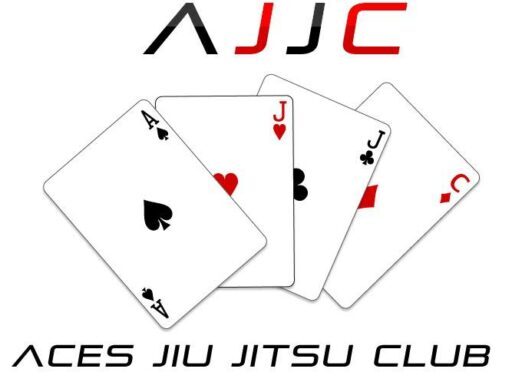The early days of the UFC showed the world the superiority of Grappling-specifically Brazilian Jiu Jitsu- over other fighting styles. Though any individual fighter can be fallible, the only competitors who are able to succeed in mixed martial arts today are those educated in grappling, in many cases specifically Jiu Jitsu. What makes jiu jitsu-and on a broader scale grappling-so crucial to a fighters ability to succeed or a regular Joe to defend themselves on the street?
Hand to hand combat is very difficult but it is relatively simple: on a basic level hand to hand combat is the expression of control of space coupled with understanding of how to break the body either through blunt force trauma or through leverage based holds. Of all the grappling arts, BJJ has gone the farthest in the realm of understanding the concept of spatial control and coupling it with Connection (for more about connection one should research Rickson Gracie and Henry Akins.)
The power of BJJ is in the fundamental understanding that it imparts on its practitioners of the various methods of space retention, closing distance, as well as how to create space when it is needed. There are other paths to learning these concepts but Brazilian BJJ packages these concepts well and has a PROVEN track record to success in and out of the cage.
Up until the early days of the UFC no one really understood the value of refined grappling. Wrestling was a very useful means to get someone to the ground, but its lack of submissions to FINISH THE FIGHT left pure wrestlers lacking. Catch wrestling, a far more brutal style made it difficult to stick with for weaker or smaller people. Judo’s rule set in many cases diluted the ground game. Leading Judokas (Judo Practitioners) who wanted to refine their ground game came to Brazilian Jiu Jitsu. Sambo, while super effective, had a specific rule set that limits some of the move development. Of all of the main, popular grappling arts, Brazilian Jiu Jitsu gave its practitioners the best in refined submissions. And to this day is the MOST DOMINANT STYLE used in professional MMA.
Another aspect of BJJ that makes it so superior to other arts is that many of its practitioners are willing and able to absorb necessary skills from other arts. Look at, for example, the recent emergence of competitors who have a penchant for lower body submissions known as leglocks. These are not submissions that were pioneered by the Gracie family, but they have made their way into BJJ gyms throughout the world. People have come to understand that if something works they should incorporate it, and in BJJ-given the relatively lax rule set for competition, incorporation and absorption of those skills is worth while.

The traditional use of a Jiu Jitsu Gi or Kimono is another aspect that sets Brazilian Jiu Jitsu apart from many other grappling arts. This item of clothing may seem insignificant to the layman, but the reality is that a piece of fabric that slows down movement and tightens submissions is key to the improvement of grappling skills that takes place in Brazilian Jiu Jitsu.
One other feature of BJJ that makes it so effective is its specificity. While striking is part of the self defense curriculum, jiu jitsu is the only martial art to focus as extensively as it does on submissions. As judo and wrestling are considered superior by some in their ability to determine where an altercation (sportive or otherwise) takes place, be it standing or on the ground, jiu jitsu is SUPERIOR in its ability to control that altercation once it reaches its often inevitable terminus…the ground.
Many martial arts are considered “hard” or “soft” styles. The concept being that one must compartmentalized blunt force impact with finesse. Jiu Jitsu is called the “gentle art” because it is on a fundamental level soft and malleable. Truth be told, the human body is not suited very well for impact. when strikes are incorporated joints take considerable damage even if proper technique is used. BJJ on the other hand allows its practitioners the option of not inflicting physical trauma on themselves and others while still retaining control over combat….and staying safe.
Because of its “softness” jiu jitsu can be practiced close to full speed and full force on a daily basis without inflicting debilitating injuries on its practitioners. Striking arts and even wrestling and judo inevitably take a substantial toll on their practitioners and athletes that is avoidable in jiu jitsu (even though it is not always avoided.)
There are many reasons why jiu jitsu holds superiority over other martial arts and fighting styles. These reasons can be found when training and enjoying the gentle art or when watching MMA and witnessing submission wizards’ enigmatic control over their opponents as soon as a fight hits the mat. These reasons can be seen in jiu jitsu tournaments in which often the winner of the absolute bracket is NOT the largest or strongest man in the room, but rather he with superior technique. Strength obviously plays a big part in the success of BJJ and MMA athletes, but technique is key and in jiu jitsu perfect technique is attainable for anyone who puts the time in. You for example…

Professor Mikal Abdullah is a 2nd Degree BJJ Black Belt, veteran, father, philanthropist, and founder of Aces Jiu Jitsu Club. You can find her personal Instagram account with the handle @cerebralbjj or just stop by one of our locations and get a session in!

